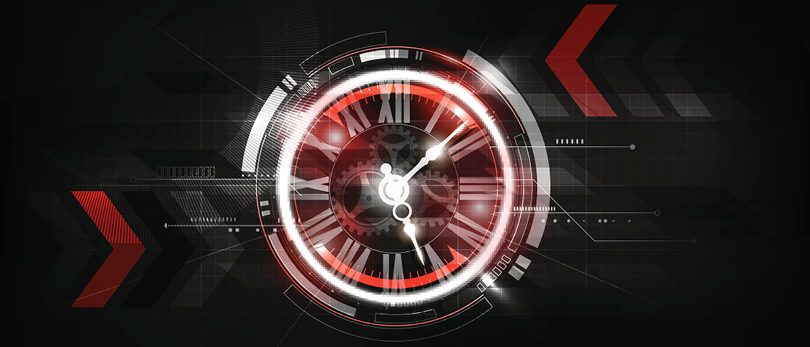In his when-to book, Daniel Pink says timing plays an outsize role in our personal and mutual fortunes.
By Allan Fallow
Coffee drinkers, which do you want to hear first about your beloved pick-me-up: the bad news or the good?
Before you answer that question, you might want to sample the latest findings from Daniel Pink, genial author of the best-sellers To Sell Is Human, Drive, and Free Agent Nation. Over the last two years, Pink and two researchers, Cameron French and Shreyas Raghavan, examined some 700 studies in fields from economics to endocrinology to the fuzzy-sounding “chronobiology.” In When—Pink’s newest work of social-science popularizing—he identifies their goal: to unearth the “hidden science” of when to do what, and why.
The trio’s spadework revealed (among many other things) the best sequence of good news vs. bad. “As someone who finds himself delivering mixed news more often than he wants to,” writes Pink, “I’ve always led with the positive. My instinct has been to spread a downy duvet of good feeling to cushion the coming hammer blow. My instinct, alas, has been dead wrong.”
Bittersweet
As Pink discovers, 4 of every 5 people (coffee drinkers included) prefer to hear the bad news first and the good news last. Patients want to hear they have cancer, but thankfully, it’s treatable; students want to hear they blew the midterm but can still pull out a B; and employees want to swallow the bitter medicine about their past year’s performance before being offered a spoonful of sugar.
So in Pink’s spirit of optimized timing, let me give you the bad news about java first: Caffeine disrupts the body’s production of cortisol—the “stress hormone that kick-starts our groggy souls” each morning—so delay quaffing that first cup of coffee for an hour or so after you wake up. And now the good: Drink a cup of joe right before a 20-minute power nap and the caffeine will kick in just as you get up. (Pink dubs this practice the “nappuccino.”)
It sounds like Pink took his sweet time embracing the restorative siesta. From age 5 onward, he had deemed naps “the behavioral equivalent of sippy cups—fine for toddlers, pathetic for grown-ups.” As sleep science entered the mainstream, however, Pink began to study the circadian rhythms that he says govern our physiology and psychology. He came to see that everyone has a “chronotype,” be they dawn-loving larks (14%), night-flying owls (21%) or middle-of-the-flock “third birds” (65%). That realization moved Pink “from nap detractor to nap devotee,” convinced that a midday break can keep our fluctuating daily performance potential on an even keel.
So, should When be retitled The Big Pink Book of Naps? Hardly; the author ranges widely through the emerging evidence, showcasing new research that proves why the timing of everything from scheduling an earnings call to changing jobs (and even partners!) constitutes a science that can help us work smarter and live better.
Time out
Dearth in the afternoon. Most people’s “net good mood” rises in the morning, plummets after lunch and rises again in early evening. That makes afternoons periods of real peril. Anesthetists are four times likelier to make a mistake during a 4 p.m. surgery as during one at 9 a.m.; the typical worker’s most unproductive moment of the day hits at 2:55 p.m.; and in the U.K. at least, sleep-related auto accidents spike between 2 and 4 p.m.
Eat, play, loll. Danish schoolchildren given a 20–30-minute break before a standardized test scored as if they spent an extra three weeks in the classroom.
Pardon me. If the parole board calls, decline the 11:45 a.m. slot; judges are shockingly more lenient after they have taken a break from passing sentences. 52 on, 17 off. The “golden ratio” of labor is 52 minutes of work followed by 17 minutes of rest. That’s the conclusion of the company DeskTime, whose software tracks productivity.
Unplug. The ideal restorative break grants you both physical and psychological detachment. So “consider a short walk outside with a friend during which you discuss something other than work.”
How sad is this? With office workers manacled to their keyboards from 9 to 5, the “sad desk lunch” has become a meme and a hashtag. Fighting back, CBRE—a large commercial real estate firm in Toronto—has banned its associates from dining deskside.
Well, that’s a relief. Merely anticipating a nap can lower your blood pressure.
Drink in tandem. A “social break” can extricate you from the performance trough that follows the morning peak, but who’s got the time? Try this: Buy someone a coffee and sit with her for two minutes while she takes her first sips.
Start smart. Larks start morphing into owls around puberty, so no middle- or high-school class should begin earlier than 8:30 a.m. Such was the 2014 policy pronouncement by the American Academy of Pediatrics.
Forget the Big 5-Oh! The birthday to really fear is your 53rd; a 2008 study of 500,000 Americans and Europeans revealed that “subjective well-being among males bottoms out at an estimated 52.9 years.” (Oh, and the “midlife crisis” is largely a myth.)
The sprint finish is a thing. It’s utterly arbitrary, but nearing the end of a decade galvanizes the mind—and alters our behavior. This explains why “9-enders” (those in the last year of a life decade) are overrepresented by an astonishing 48% among first-time marathon runners. These “temporal landmarks” function as performance goads, too: “People who had run multiple marathons,” writes Pink, “posted better times at 29 and 39 than during the two years before or after those ages.”
RSVP, stat! A boss’s e-mail response time is the best predictor of employee satisfaction.
Just my chronotype. Lark, owl or third bird? Discover which bird brand is yours by taking the chronotype questionnaire at danpink.com/MCTQ. The exercise may lead you to conclude, as Pink does, that “everything is timing.”








